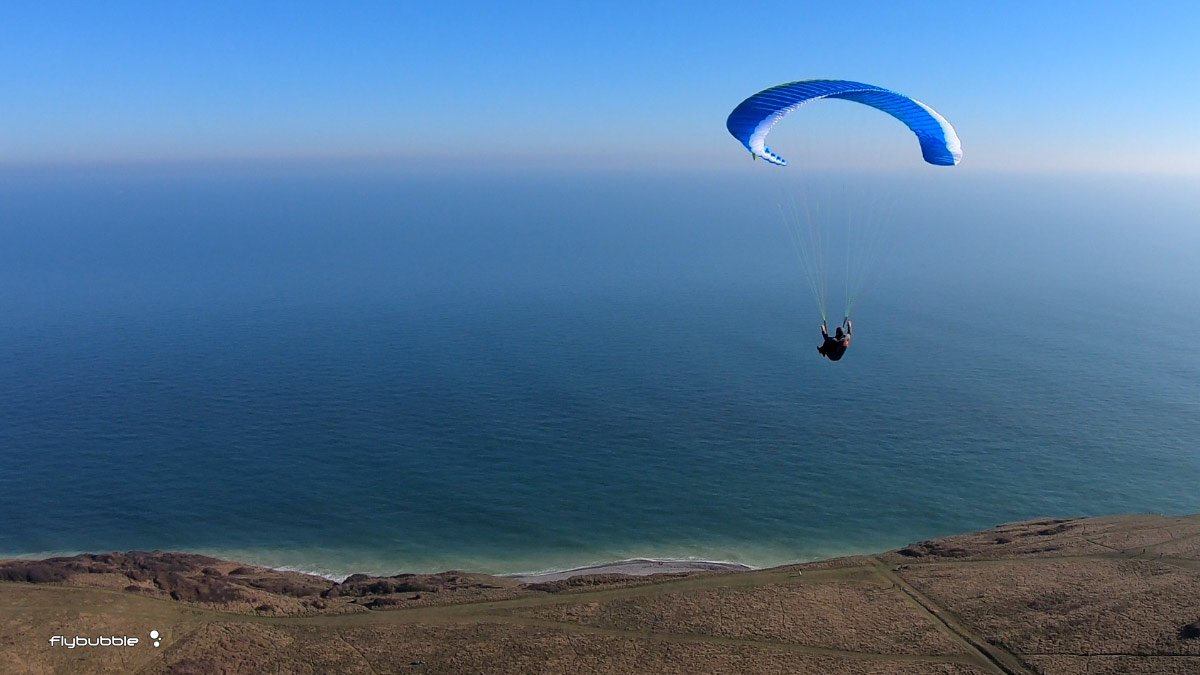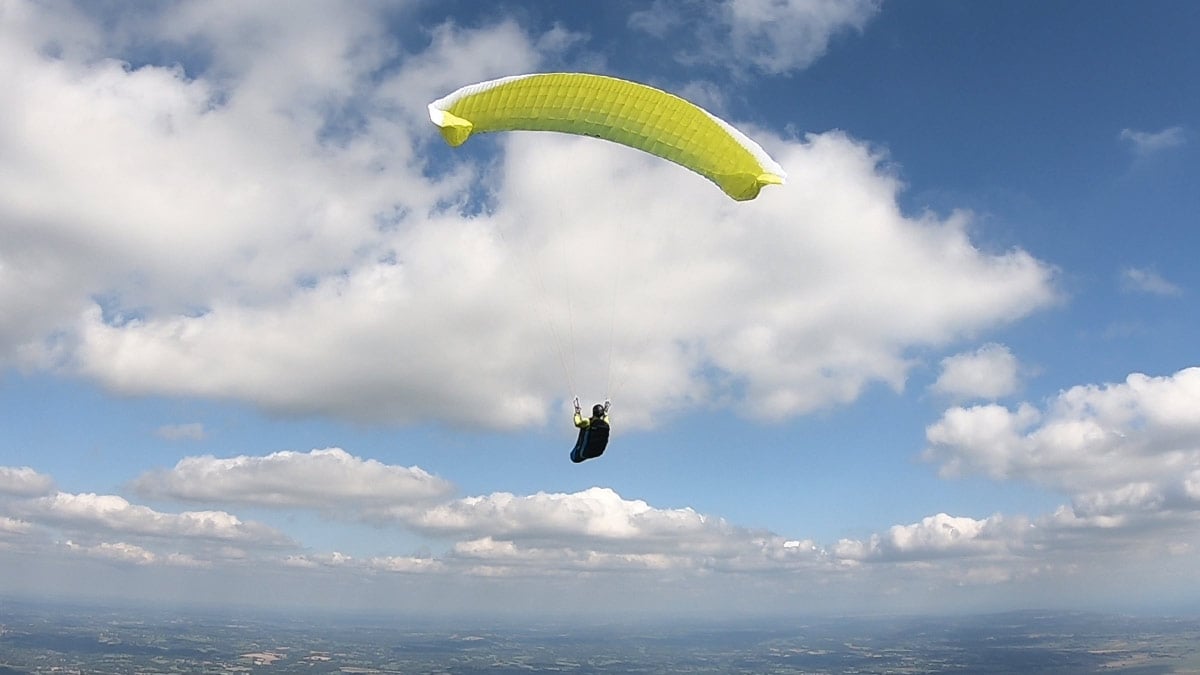
Big ears: a flappy flight manoeuvre, misunderstood, maligned and even feared by beginners, this stalwart of the cloudbase regular is an essential skill for all pilots. Let’s strip it down to the basics, so you can tuck with confidence.
What is Big Ears?
A controlled collapse of the canopy that tucks the wingtips underneath the wing to reduce the surface area. The reduced wing area causes you to fly faster and sink faster, but the baggy fabric at the tips produces drag that slows you a roughly equal amount and so worsens your glide angle.
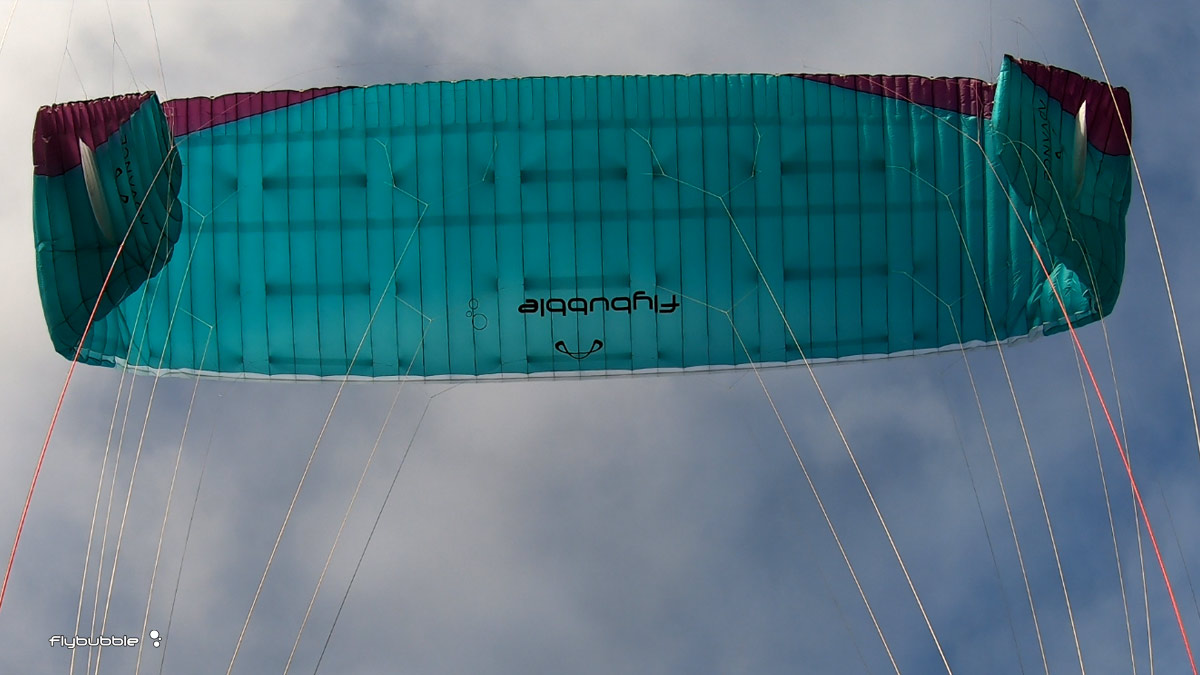
Is it Ears or Big Ears?
Pulling the outer A line down will give you Ears. On some wings this is adequate. On others the sink rate increase is really pathetic, and you need Big Ears.
Pulling the outer 2 A lines on a wing that has 3 or 4 A lines per side will usually produce Big Ears, but it’s not the same on every wing. Sometimes it’s better to just pull down further on the outer A line to pull in ‘more ears’ to get to the Big Ears position. So the distinction between Big Ears and Ears is a bit vague.
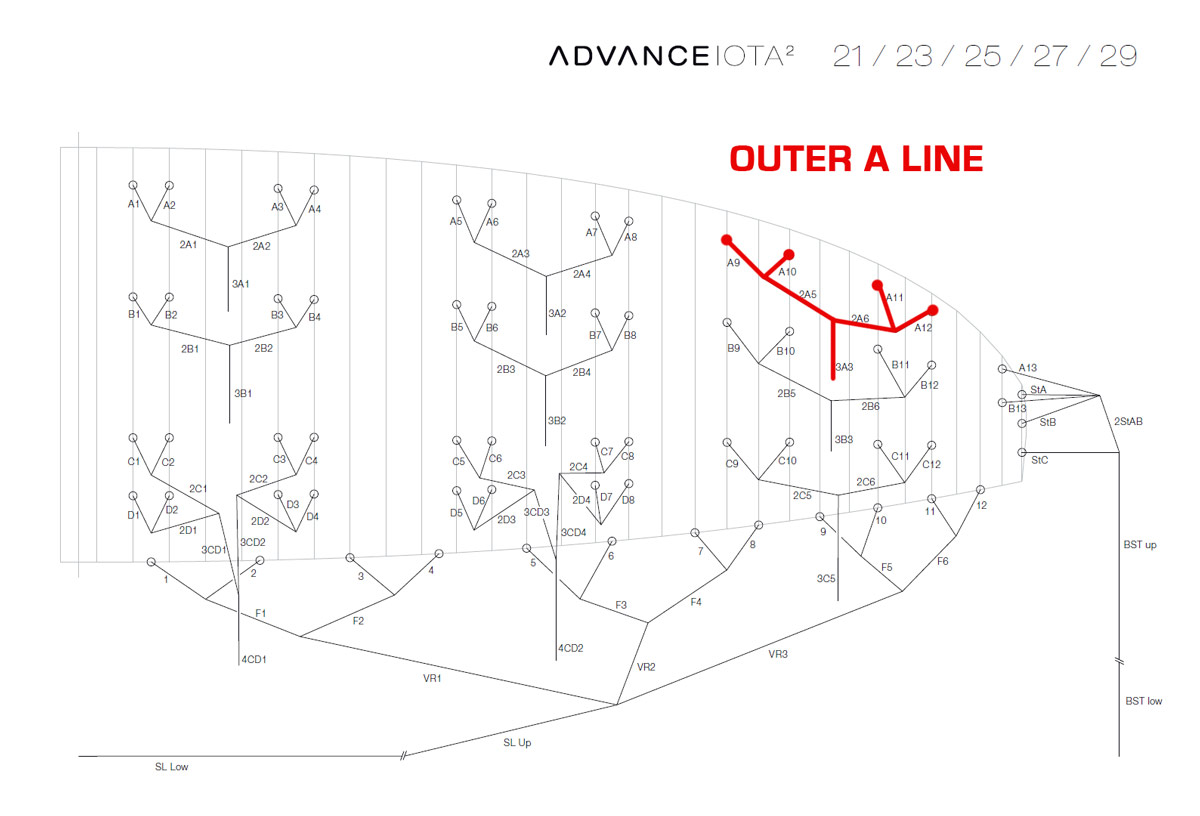
Why would you do this to a perfectly good wing?
To get down faster. In most extreme situations it is the best option, because it has no added G force, retains your forward speed, and is simple to engage and release. If your sink rate without Ears is 1m/s, you might get 1.8m/s with Ears, 2.4m/s with Big Ears, and just over 3m/s adding full speedbar.
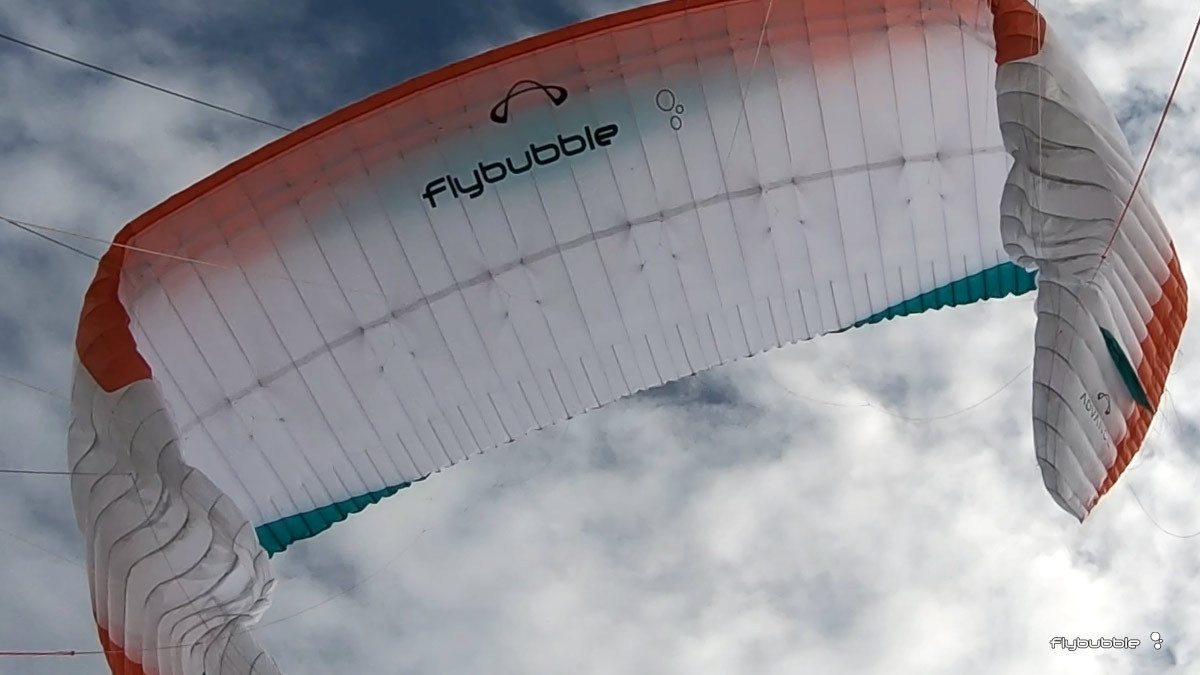
What are the dangers?
By doing this manoeuvre you increase the angle at which the air is striking the leading edge (from beneath) called the angle of attack. This takes you closer to the stall point of the wing. If you fly into turbulence, your wing has less tolerance than normal, and it might stall. In a stall, the ears might stay in, and it might stay in a stall indefinitely, or dive out strangely.
This is made worse if your wing is old (not a perfect aerofoil any more), if it is wet or if it is out of trim (when was your wing last checked?)

What mistakes do pilots typically make?
- Pulling the wrong lines. Look at your wing’s line diagram (usually on the manufacturer’s website), study your lines on the ground, and test it during your groundhandling practice sessions. Regularly train yourself in the air to ‘go for the big ears lines’ even if you don’t want to induce the manoeuvre. Just knowing where the lines are can help you when you need it in an extreme situation. (This is usually simple, most wings have ‘split As’.)
- Landing behind an obstacle (cliff edge, trees) with the Ears in. It’s a bad idea to pass through a sheer layer (from strong wind down into sheltered area) with Ears in. The sudden lack of wind means your wing has a temporary loss of airspeed, and this might cause a stall, when you don’t have enough height to recover.
- Being on full speedbar, then pulling Ears. In an extreme situation, the air might be turbulent, and you might be panicking. If your wing is already close to having a frontal collapse (fully accelerated) and then you yank on the outer A lines, you can pull more than you want under, and then get a rather surprising and decidedly instant loss of the whole aerofoil. Yikes!
How to do BIG EARS properly
- Get your foot on your speedbar.
- Letting go of the brakes is not recommended, because if you are in bad conditions and induce a big collapse, the risers will go slack and you won’t find the brake handle fast, and it can get tangled up. Rather put your whole hand through the loop so it hangs loosely around your wrist. This gives you some freeplay to pull the ears without also pulling on the brake line. Or experiment with alternative brake holds to achieve a clean big ears 'pull' that doesn't engage the trailing edge.
- Make sure the wing is settled in level flight (or as near to level as you can manage using active flying inputs). You want the wing directly overhead at the moment you pull in the Big Ears lines.
- Reach high up the outer A lines, with your hands rotated inwards so your thumbs point down. Grab, twist, and pull downwards. Watch the wing and adjust your pull to get a stable position where the wing doesn’t fight you or flap.
- Push half speedbar. This helps reduce the angle of attack and increase your sink rate. If you are comfortable in the conditions you can go to full speedbar.
- Use weight shift to steer. Try avoid pulling the brake lines as it will start to clear the ears again, and also slows the wing taking it even closer to stall.
- To clear the ears, come off the speedbar first and give the wing time to adjust to the slower speed. Some wings are hard to clear when accelerated, and being on speedbar and using brakes at the same time is no good, it might well cause a collapse.
- Some wings open on their own, but if they are ‘stuck in’ then give one moderate symmetric pump on the brakes. If that doesn’t clear it straight away, then clear them one at a time: one deep pump, observe, wait, repeat. Don’t be in a hurry to clear them out, the wing will fly just fine with a little fold-under.
- Most of the time you’re avoiding clouds or airspace, so you have altitude to spare. It’s best to clear the ears before setting up for landing, so at least 50m/165ft above the terrain, to avoid ground-wash turbulence messing things up.
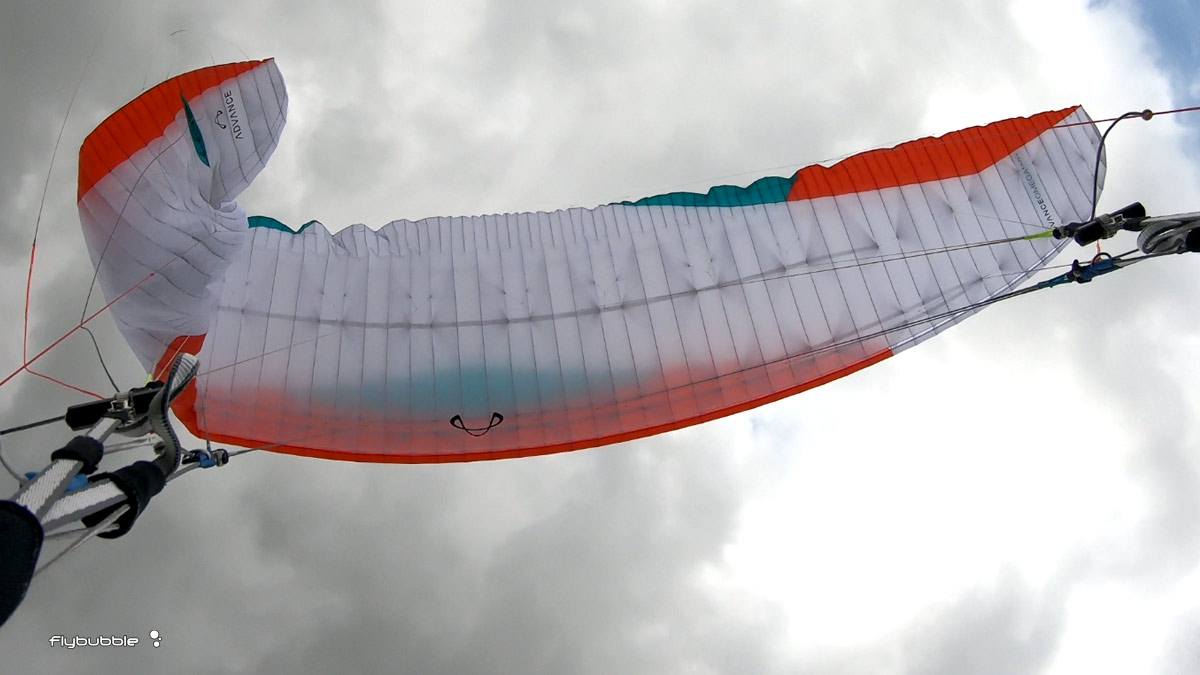
Practice this in mild conditions so you hone your skills in an ideal environment. In some of the moments when I’ve needed Big Ears, things have been rather wild. Of particular interest during practice is to establish whether your wing flies slower or faster with the ears in, and how much to pull in to get a stable descent.
Big ears: video
Join Greg as he shares the low-down on the go-down
Check out the video comments (below the video on Youtube) to keep up with the lively discussion and further tips.
Brought to you by Flybubble
Like what we do? The best way to thank and support us is to buy gear from us and recommend us to others. Review our service on Trustpilot and our products on Flybubble Shop. You can also subscribe to Flybubble Patreon. Thank you!

